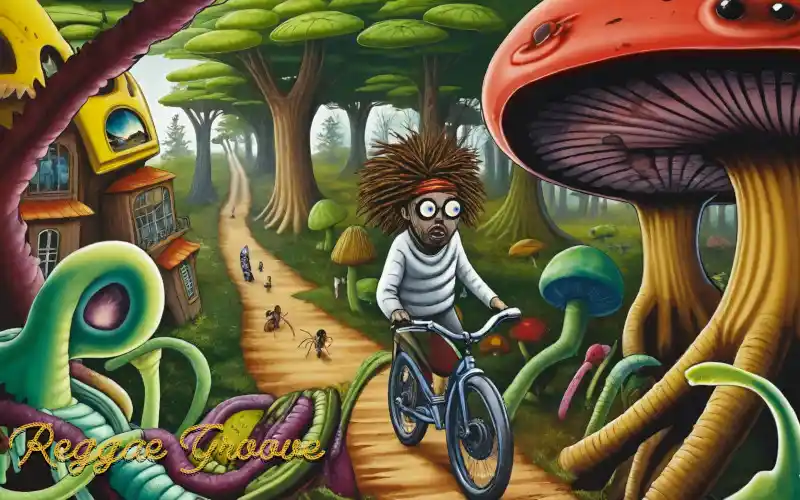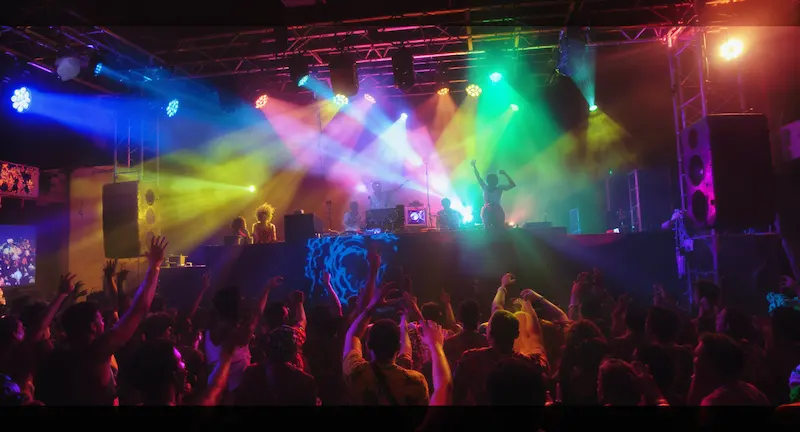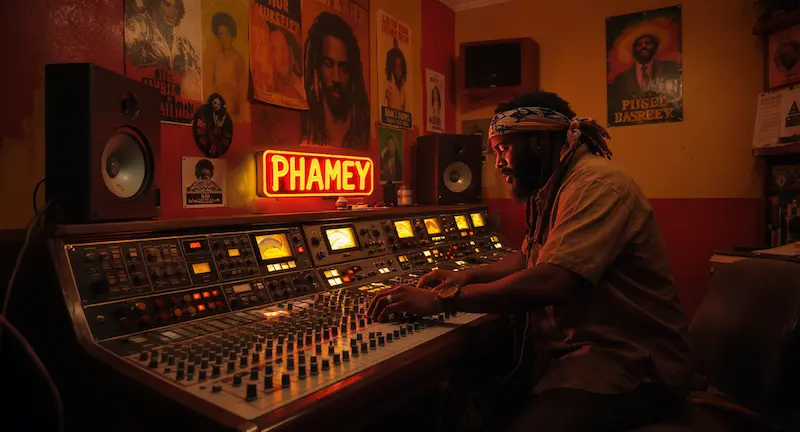
The Development of Reggae Genres: An Overview of Ska, Rocksteady, Roots, Dub, and Dancehall
The Development of Reggae Music: An Overview of Ska, Rocksteady, Roots, Dub, and Dancehall
Reggae music began in Jamaica in the late 1960s. It has grown into many styles that are loved by fans all over the world. Its evolution from ska and rocksteady to the current subgenres of reggae is really something to behold.
The podcast series that we have most recently released takes an extensive look at the history of reggae. We go deep into the styles and the historical contexts that created this profoundly influential music. Come with us as we investigate reggae’s evolution—right from its origins to the dancehall beats that you hear today.
Understanding where reggae has come from and how it has changed over time helps us appreciate all its different forms and styles. With that in mind, let’s dig into reggae and explore its presence and influence across the world.
The Rhythm Journey: Exploring Reggae’s Rich Heritage
Reggae must be understood within the context of Jamaica’s music and culture of the 1950s. This music scene was crucial for creating the island’s culture of sound. It opened up powerful new avenues for expression, which were then developed in subsequent decades.
Reggae Culture Podcast: Reggae Evolution
This Reggae Culture podcast explores the rich history and development of reggae music. We probe the many forms of reggae—dancehall, dub, roots, ska, and rocksteady, to name a few—and consider the artists, producers, and cultural contexts that have made them what they are. The series takes a good long look at the many facets of a music form that just keeps evolving.
Jamaica’s Musical Foundations
The music of Jamaica was affected by traditional mento, jazz, and R&B. Reggae was the sound that came from blending these genres.
The Social and Cultural Context of 1950s Jamaica
Social and cultural advancements were in the offing for Jamaica in the 1950s. The island represented such change when it was reborn musically, expressing its newfound identity in songs that echoed this rhythm of progress. Music articulated the aspirations of the people and correlated precisely with the struggle for independence.
Early Influences: R&B, Jazz, and Mento
Jamaican music drew much of its development from the influences of R&B and Jazz from the US, which brought strikingly fresh rhythms and new instruments. Also key to the musical identity of Jamaica was mento, a traditional genre born on the island.
These influences congealed to create a propitious era for the birth of new musical styles.

Ska: The Upbeat Beginnings of Jamaican Popular Music
Ska music initiated in Jamaica in the late 1950s, transforming the island’s music scene. It melded American jazz and rhythm & blues with calypso and mento from the Caribbean.
The Sound System Culture and Its Impact
Sound system culture was crucial in the growth of ska. Mobile discos managed by sound system operators held parties and contests. They flaunted the newest ska records, popularizing the music while simultaneously pushing it to evolve.
Defining Characteristics of Ska Music
Ska music is famous for its unique and cheerful beat. It has several essential attributes:
- The distinctive beat, frequently referred to as the ‘skank’ or ‘shuffle’
- Prominent horn sections give a bright and lively texture.
- Energetic Dance moves
The culture of dance is given a potent shot of adrenaline here with moves reminiscent of hip hop, breakdancing, and other street styles that Jesse Lee and Mike J. Miller have helped to create. In particular, these guys are pushing the idea that you can and should dance with abandon and that dance can and should be a part of a larger, minute-to-minute, 24/7 kind of life.
The Offbeat Rhythm and Horn Sections
What makes ska stand out is its unusual rhythm. It has a vibrant layer that horn sections add, with trumpets, trombones, and saxophones.
Ska’s Dance Culture
Ska attracted dancers in large numbers. These were not just any dancers; they were complex-move dancers who performed to the insistent, propulsive rhythms of ska—dancers who could create stunning visual effects and ones who could, even more importantly, bring audiences at clubs and concerts to their feet.

Key Ska Artists and Their Contributions
Prince Buster, Desmond Dekker, and The Skatalites influenced ska. They took ska to a new level by delivering it to the masses and tinkering with its formula.
Rocksteady: The Smooth Transition
Jamaican music experienced a pivotal moment with the transition from ska to rocksteady. It was a move to a slower tempo that allowed for greater musical complexity, a moment that lasted from about 1966 to 1968. It was not just a change in style but a musical revolution charting new territory. The change was partly dictated by audiences’ tastes, who were clambering for a new form of slow dancing.

From Ska to Rocksteady: The Tempo Change
Rocksteady developed as a rhythm-to-the-square type of music. It was a “slower, more expressive” take on ska, and it really let the vocalist shine. The rocksteady era was so influential that you can hear its fingerprints all over music that came after it, especially reggae. Here are some of the things that rocksteady did beyond being just a “period after ska.”
Musical Elements and Innovations of Rocksteady
Rocksteady’s sound was marked by a strong emphasis on bass and vocal harmonies. 10. These traits not only defined rocksteady but also helped propel it to popularity and influence. Its elements not only shaped rocksteady but also made it attractive and impactful.
Bass-Heavy Sound and Vocal Harmonies
A major difference between ska and rocksteady was that rocksteady had a big bass sound. Bass lines were now the driving force in this music. They now took center stage and drove the music along. This made the music deeper.
Lyrical Themes in Rocksteady
The lyrics of rocksteady were concentrated on social issues and love, similar to ska. Yet, it tackled these topics with a lot more subtlety and personal profundity. The tempo was slowed down, allowing for more narrative and poetic expression.
Influential Rocksteady Performers and Recordings
The Gaylads and The Maytals were instrumental in defining rocksteady. Their hits showcased the genre’s essence. Recordings from this era are celebrated for their role in reggae’s evolution.
Reggae Genres Explained: Roots, Culture, and Spirituality
Roots reggae is an essential component of reggae music. It emphasizes spirituality and social issues. 12.This genre portrays Jamaicans’ hopes and difficulties and has influenced global reggae.This genre reflects the hopes and struggles of Jamaicans and has shaped global reggae.
Roots Reggae: The Spiritual and Political Core
Roots reggae is deeply connected with Rastafarianism, a Jamaican movement from the 1930s. Its lyrics often talk about justice, equality, and spiritual growth.
Rastafarian Influence on Reggae Music
The Rastafarian movement has greatly influenced roots reggae.It emphasizes African identity, resistance to persecution, and Haile Selassie I’s divinity.These thoughts have inspired many reggae artists. Many reggae artists have been inspired by these ideas.
Social Commentary in Roots Lyrics
Roots reggae songs often tackle issues like poverty, inequality, and corruption. Artists use their music to speak out for marginalized groups and push for change.
Bob Marley and the Global Spread of Reggae
Bob Marley is a big name in reggae. His songs “One Love” and “Redemption Song” advocate for fairness everywhere.
Marley’s success helped other reggae artists reach fans worldwide. His legacy inspires musicians and fans today.
Reggae’s Impact on World Music and Culture
Reggae, mainly roots reggae, has changed music and culture worldwide. It brings messages of justice and spirituality to many genres. It also influences fashion, art, and language.
Reggae’s impact goes beyond music. Many people consider it a symbol of their identity. It shows the power of authenticity and resistance.
The Sound System Revolution: Dub and Dancehall

The Sound System Revolution was key in shaping dub and dancehall. It was a change in culture, not just music. It was a cultural shift. Sound systems became the heart of Jamaican parties, with DJs competing to entertain.
Reggae’s Impact on World Music and Culture
Dub focuses on remixing and production. It involves creating new sounds from existing tracks, often highlighting drums and bass. Pioneers like King Tubby and Lee ‘Scratch’ Perry led this movement.
Studio Wizards: King Tubby and Lee “Scratch” Perry
King Tubby and Lee “Scratch” Perry were pioneers in dub. They used studio equipment to create instrumental versions, focusing on rhythm. Their work influenced modern electronic music.
Dub’s Influence on Modern Electronic Music
Dub’s creative production methods have shaped electronic music. Genres like drum and bass, ambient, and techno have been influenced by dub. Many artists see dub as a key influence.
The Rise of Dancehall: New Rhythms and Themes
Dancehall music started with new beats and themes. It became a lively genre that showed off Jamaican culture. Its fast beats and songs about social issues and parties made it stand out.
Dancehall Culture and Performance Style
Dancehall is all about high-energy shows and cool fashion. Stars like Yellowman and later Sean Paul took dancehall worldwide. They showed off its special style and vibe.
From Yellowman to Sean Paul: Dancehall’s Evolution
Dancehall changed a lot from Yellowman’s early days to Sean Paul’s big success. It kept its energy but added new styles and themes. This made dancehall even more popular.
Digital Revolution in Jamaican Music
The 1980s brought digital tools to Jamaican music. This changed dub and dancehall into new sounds. The digital shift helped keep reggae and dancehall fresh in the global music scene.
In conclusion, the Sound System Revolution was key for dub and dancehall. These genres have greatly influenced reggae and more. As we look at reggae’s growth, it’s clear these genres are key to its story.
Conclusion: The Enduring Legacy of Reggae Music
Reggae music has made a lasting mark on music and culture worldwide. It has inspired many through its diverse styles, from ska to dancehall. Reggae’s journey from Jamaica to the world shows its lasting impact.
Getting into reggae explained for beginners means understanding its rich history and music styles. The reggae genre breakdown shows a complex music world that has shaped many artists. Reggae’s legacy is seen in its ongoing popularity and influence on music.The reggae legacy shows music’s power to cross borders and cultures. As a big part of Jamaican culture, reggae is celebrated through music and art. Its influence can be seen in many modern music styles, from electronic to hip-hop.

FAQ
What are the main genres of reggae music?
The main genres of reggae music are ska, rocksteady, roots reggae, dub, and dancehall. Each genre has its own unique sound and played a big role in reggae’s growth.
How did ska influence the development of reggae?
Ska played a big role in shaping reggae. Its unique rhythm and horn sounds paved the way for reggae. It was a major part of Jamaican music’s journey.
What is the difference between ska and rocksteady?
Ska is fast and all about the horns. Rocksteady, on the other hand, is slower and focuses on vocals and instruments. Rocksteady emerged later, with a more soulful vibe.
What is roots reggae, and how did it emerge?
Roots reggae is about Jamaican people’s hopes for a better future. It started in the 1970s, influenced by Rastafarianism and social issues. Artists like Bob Marley helped it reach the world.
How did dub music influence reggae and other genres?
Dub music changed reggae and other genres with its remixing focus. Dub’s studio wizards, like King Tubby, brought new sounds. These changes influenced electronic music.
What is dancehall, and how did it evolve?
Dancehall came from sound system culture, with fast beats and lyrics. It evolved over time, thanks to artists like Yellowman and Sean Paul. Dancehall is a big part of Jamaican music today.
How has reggae music impacted global music and culture?
Reggae music has changed the world of music and culture. It has influenced many genres, like electronic, hip-hop, and rock. Its focus on social issues and spirituality has made it famous worldwide.
Artists like Bob Marley have become famous worldwide. They have shown the power of reggae music.
What is the significance of sound system culture in reggae’s evolution?
Sound system culture was key in reggae’s growth. It gave artists a place to perform and for new sounds to come out. This culture also helped in the creation of dub and dancehall.
It focused on remixing and the power of words in music.

